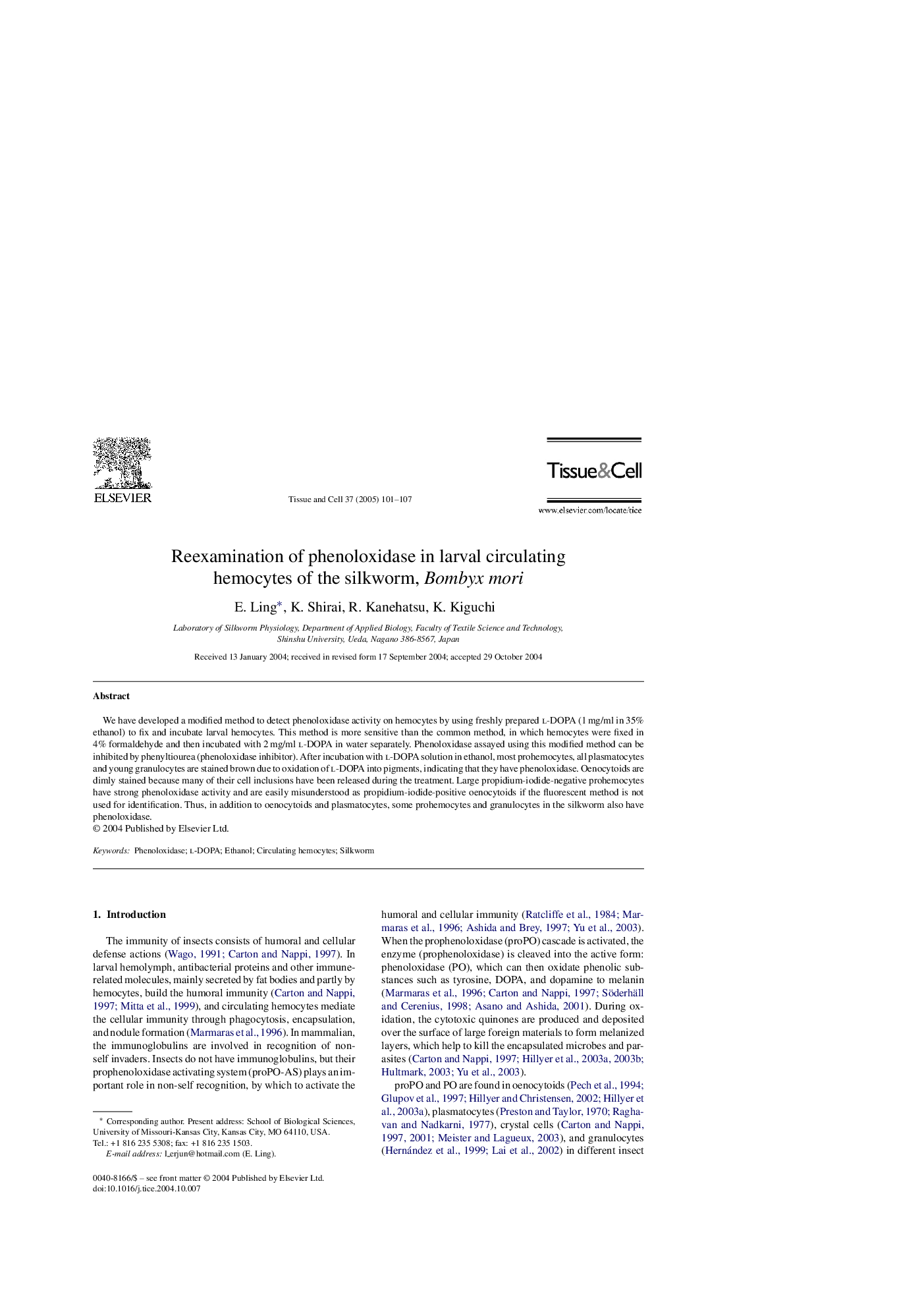| Article ID | Journal | Published Year | Pages | File Type |
|---|---|---|---|---|
| 10959737 | Tissue and Cell | 2005 | 7 Pages |
Abstract
We have developed a modified method to detect phenoloxidase activity on hemocytes by using freshly prepared l-DOPA (1Â mg/ml in 35% ethanol) to fix and incubate larval hemocytes. This method is more sensitive than the common method, in which hemocytes were fixed in 4% formaldehyde and then incubated with 2Â mg/ml l-DOPA in water separately. Phenoloxidase assayed using this modified method can be inhibited by phenyltiourea (phenoloxidase inhibitor). After incubation with l-DOPA solution in ethanol, most prohemocytes, all plasmatocytes and young granulocytes are stained brown due to oxidation of l-DOPA into pigments, indicating that they have phenoloxidase. Oenocytoids are dimly stained because many of their cell inclusions have been released during the treatment. Large propidium-iodide-negative prohemocytes have strong phenoloxidase activity and are easily misunderstood as propidium-iodide-positive oenocytoids if the fluorescent method is not used for identification. Thus, in addition to oenocytoids and plasmatocytes, some prohemocytes and granulocytes in the silkworm also have phenoloxidase.
Keywords
Related Topics
Life Sciences
Agricultural and Biological Sciences
Agricultural and Biological Sciences (General)
Authors
E. Ling, K. Shirai, R. Kanehatsu, K. Kiguchi,
